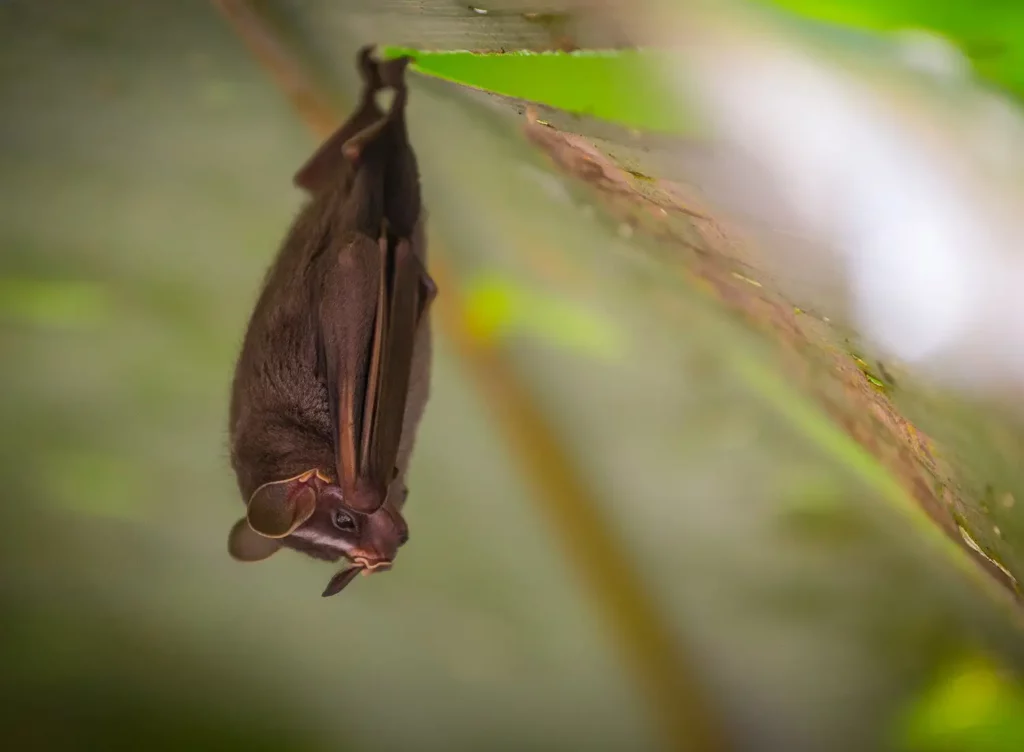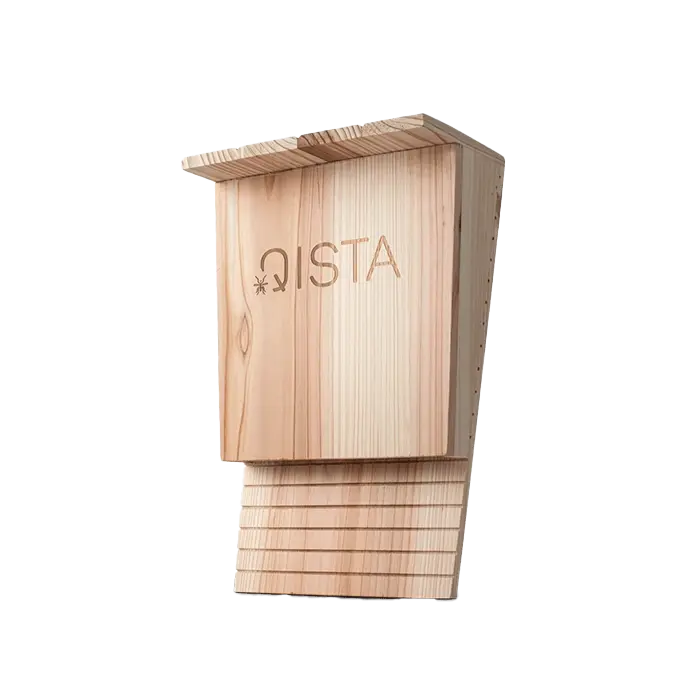Home / The role of bats in controlling mosquitoes

Bats are mainly insectivores and have an important, if little known, role in the environmental regulation of mosquitoes.
Often associated with vampires, bats actually prefer insects over blood. But when it comes to bloodsuckers a mosquito’s reputation precedes it and bats are one of its main predators in the natural state.
3000
Mosquitoes
On average and on the basis of their weight, bats devour the equivalent of 3,000 mosquitoes a night.
Generally speaking, insectivore bats eat a third of their weight in insects every day. But some can gulp down much greater quantities – up to the equivalent of their entire weight.
They often have a bad reputation but bats are inoffensive animals which play a very important role in the ecological balance, particularly by naturally reducing the number of mosquitoes and other insects.
As predators, bats act as a natural insecticide and effectively regulate destructive insect pests. In particular, they combine an eco-friendly reduction in the mosquito population with eco-friendly protection of agricultural crops. In terms of efficiency, take the case of the little brown bat which can eat the equivalent of its weight in insects in the space of a single night. Bats also play an important role in conserving plant diversity : some bat species are nectarivores and contribute to pollination. Others are frugivores and help disperse seeds across different ecosystems. Their faeces, or guano, prove to be a very effective natural nitrogen fertilizer.70
%
70% of the world’s bats are insectivores.
Although numerous organisations across the world are now working to stop the decline of bats, we can all also help by installing an artificial bat roost to house them.
Remember that these mammals are not rodents. They do not damage walls or structures.
A bat box means that the animal can be re-established in urban areas and the mosquito population can be controlled without using any insecticides. Simply place it on the façade of your house or a tree trunk and let nature do the rest.
The Qista bat box perfectly complements the work of the BAM VISIO mosquito trap. It helps you catch more mosquitoes while helping to reintegrate bats in urban areas.

Chiroptera, more commonly known as bats, are nocturnal mammals which use echolocation to find their way in the dark. They are the only mammals able to achieve active flight (flapping their wings).
They hibernate for 3 to 5 months in the winter, mostly from November to March. They shelter in places where the temperature is constant (caves, tunnels, attics, basements, etc.) and their vital functions slow down. During hibernation, their body temperature is barely higher than that of the ambient air temperature. When they awaken, the resumption of metabolism requires a lot of energy and their heart rate increases from 1 beat every 3 minutes to 400 beats per minute.
Given their small size, chiroptera achieve exceptionally longevity and certain species can live to be 39 years old.
All bat species in France have been protected by ministerial decree since 1981.
19 species are included on France’s red list of threatened species and 13 are included on the IUCN red list. In areas which are densely populated or have been intensively farmed or deforested, most chiroptera populations have been drastically reduced or have disappeared locally.
Human activity is usually responsible for the decline of this mammal, be it directly or indirectly.
The following are just some of the reasons behind the disappearance of bats in certain areas :


In order to confirm the role of bats in the natural control of mosquitoes, an experiment was carried out by the University of Florida (UF) in Gainesville in the 1990s.
At that time inundated with mosquitoes, in 1991 the University installed enough large bat roosts to house a total of 200,000 bats with ideal conditions for the mammal.
Nearly 7 years later the experiment was a success: approximately 70,000 bats were using the roost and were eating about 60 million insect pests a night. The University was therefore able to rid itself of chemical insecticides and make significant savings.
After the success of the first experiment, the University of Florida extended it to a second set of roosts.
The University of Florida bats have a special section on the website of the Florida Museum (UF’s partner) where a number of resources about this experiment can be accessed.
WANT TO KNOW MORE ABOUT QISTA’S TECHNOLOGY?